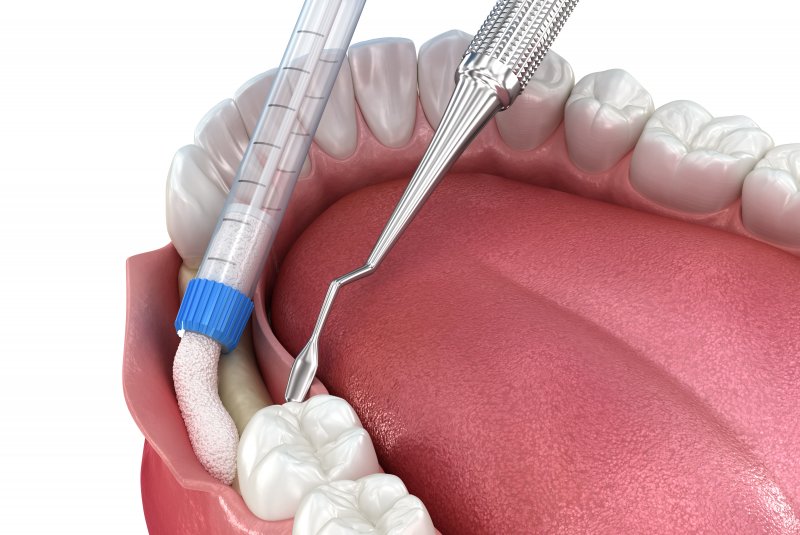
Many people are aware that to receive a dental implant, they must have enough bone. Without a proper amount of bone, a dental implant will be at risk of infection or failure.
So, what do you do if you don’t have enough bone? Bone grafts are usually the answer. However, there are many different kinds of bone grafts.
When a tooth is removed, the remaining hole is called a “socket.” This socket will fill in naturally with bone. However, if an implant is being considered a bone graft oftentimes is needed. Variables include the size, shape, and location of the remaining socket.
Besides socket grafting, there are other types of grafts. “Sinus grafting” is when you need implants in the upper back jaw, but the sinuses are too large. “Block grafting” and “ridge splitting” are necessary when your bone is too thin to accept implants.
Be aware that most of the time bone grafts need to heal before implants can be placed. Healing is usually required between 2 and 6 months.
Bone grafting material can be sourced from various locations and will therefore have different names: an “autograft” comes from yourself. The bone is harvested from a different location within your mouth. An “allograft” comes from a human cadaver. A “xenograft” comes from a different animal, such as a cow (bovine). An “alloplast” is synthetic, meaning it is man-made.
One issue that is often overlooked is the condition of the gum tissue around a dental implant. Not only is it important to have enough bone for proper long-term success, but the type of gum tissue that surrounds the implants is also critical. If you have thin, moveable gum tissue as opposed to thick and stable, your implants will be at risk of complications in the distant future. Overall health, medications, and smoking are other risk factors that can affect the long-term success of dental implants, regardless of bone grafting.
One implant scenario that avoids bone grafting is “All-On-Four.” In this scenario, a full jaw of teeth can be placed onto 4 to 6 implants, and these implants are oftentimes purposely placed into areas that don’t require bone grafting.
An adjunct procedure known as PRF is sometimes performed along with grafting, whether it be bone grafting or gum grafting. PRF consists of drawing a patient’s blood and running it through a centrifuge to collect specific components. It can then be re-introduced into a bone graft to improve its handling characteristics or in conjunction with gum grafts to improve healing. In this procedure we are focused on collecting platelets, white blood cells, & growth factors; it is a common misconception that stem cells are also collected.
Do you have questions? Visit Dr. Goldberg’s website or contact us for a free consultation.
About the Author
Dr. Ira Goldberg has been performing implant procedures for nearly 30 years. He is a Diplomate of the American Board of Oral Implantology / Implant Dentistry, a Diplomate of the International Congress of Oral Implantologists, and a Fellow of the American Academy of Implant Dentistry. He performs all phases of implant dentistry at his office in Succasunna, NJ. He lectures to dentists in the field of implantology. For a free consultation, including a free 3-D scan (if necessary), please call his office at (973) 328-1225 or visit his website at www.MorrisCountyDentist.com. Dr. Goldberg is a general dentist and also a Fellow of the Academy of General Dentistry.
